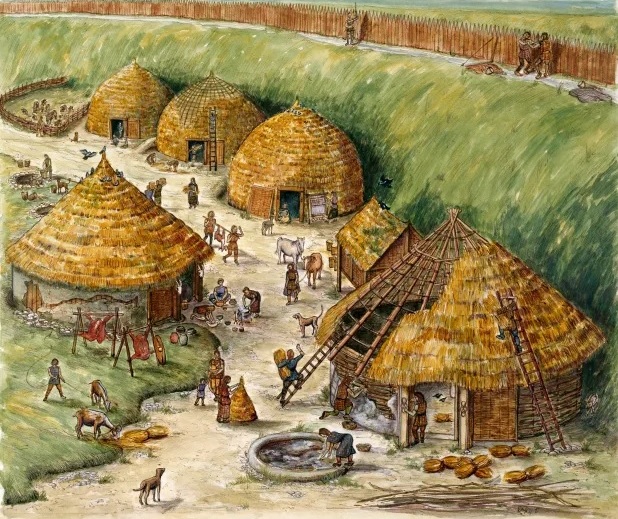Chalcolithic Period
The Chalcolithic Period is an interim era that lasts between 4500 and 3200 BC. The period is notable for the emergence of "Bronze Age" technology, characterised by the widespread use of the metal alloy of copper and tin, permitting new tools, weapons and materials. The Chalcolithic also saw the fostering of new social hierarchies and specialised labour roles, which allowed the sustainable growth of cities for the first time.
Contents
Social complexity drove the emergence of specialised classes with hitherto unknown authority, namely monarchical-like rulers, priests and artisans possessing skills that couldn't be easily duplicated. This in turn created a large labourer class with little control over their own lives, a very different arrangement from the socially communal villages of the Neolithic Period.
Several prominent human civilisations arose during this time, including the Egyptians, Mesopotamians, the Indus Valley culture and the Shang Dynasty in China. Within these areas, city-states developed and competed for resources and influence — leading to alliances, conflicts and the establishment of trade networks. To maintain order in matters like property and the exchange of wealth, was well as the division of labour, legal codes and administrative systems grew. To symbolise their power and express their legitimacy, rulers built monumental architecture, such as ziggurats, pyramids and palaces.
Similar advancements were made in Altslok, the dominant Dwarven culture in the east, and in Beleriand, which would see diaspora late in the Chalcolithic extending into the early Bronze Age.
Egypt
- Main Article: Egyptian History
The whole of Egypt consisted of the Nile Valley north of the First Cataract, a narrow deep trench only a few miles wide and 600 mi. long, and the Nile Delta, an inverted triangle 150 mi. across. The combined inhabited area of the valley and the delta was about 10,000 sq.m. As the ancient writer Diodorus pointed out, Egypt was "fortified by nature," with the cataracts in the south, the desert on the east and west, and the sea to the north — but it was also isolated by these natural barriers, with the result that there developed in Egypt a civilisation that was quite different from the other cultures of the Near East. The Nile provided Egypt with its fertility and its principal means of communication.
The Chalcolithic saw many centuries of warfare, culminating the combination of upper and lower Egypt ("the two kingdoms") at the end of the period, when King Menes established the 1st dynasty (3200 BC).
Mesopotamia
- Main Article: Mesopotamian History
The land between the Euphrates and Tigris rivers was first dominated by the Ubaid culture, whose settlements grew larger, with towns and cities emerging upon river banks. Irrigation systems were developed to harness the waters for agriculture, while cuneiform writing began to appear. Urban governance and religious practices gave urban centres unusual authority, as cultural and economic hubs. By 3500 BC, the largest of these, Uruk, began to dominate Mesopotamian culture, exerting influence on account of its wealth and tools of war. Slavery was imposed on much of the labouring population.
Massive mudbrick ziggurats and temples were built, to award priest-kings with "divine" power — as (in the game world) — these persons enjoyed personal contact with the gods and were thus able to act as intermediaries between the gods and their people. This led to a spread of polytheistic religion, for this was the first human-to-god communication to take place. Ziggurats were also necessary for the performance of rituals and ceremonies.
Trade was carried forty to distant parts from the Indian subcontinent to the Mediterranean basin. Cultural developments included mathematics, sculpture and astronomy, the last for calendrical purposes.
